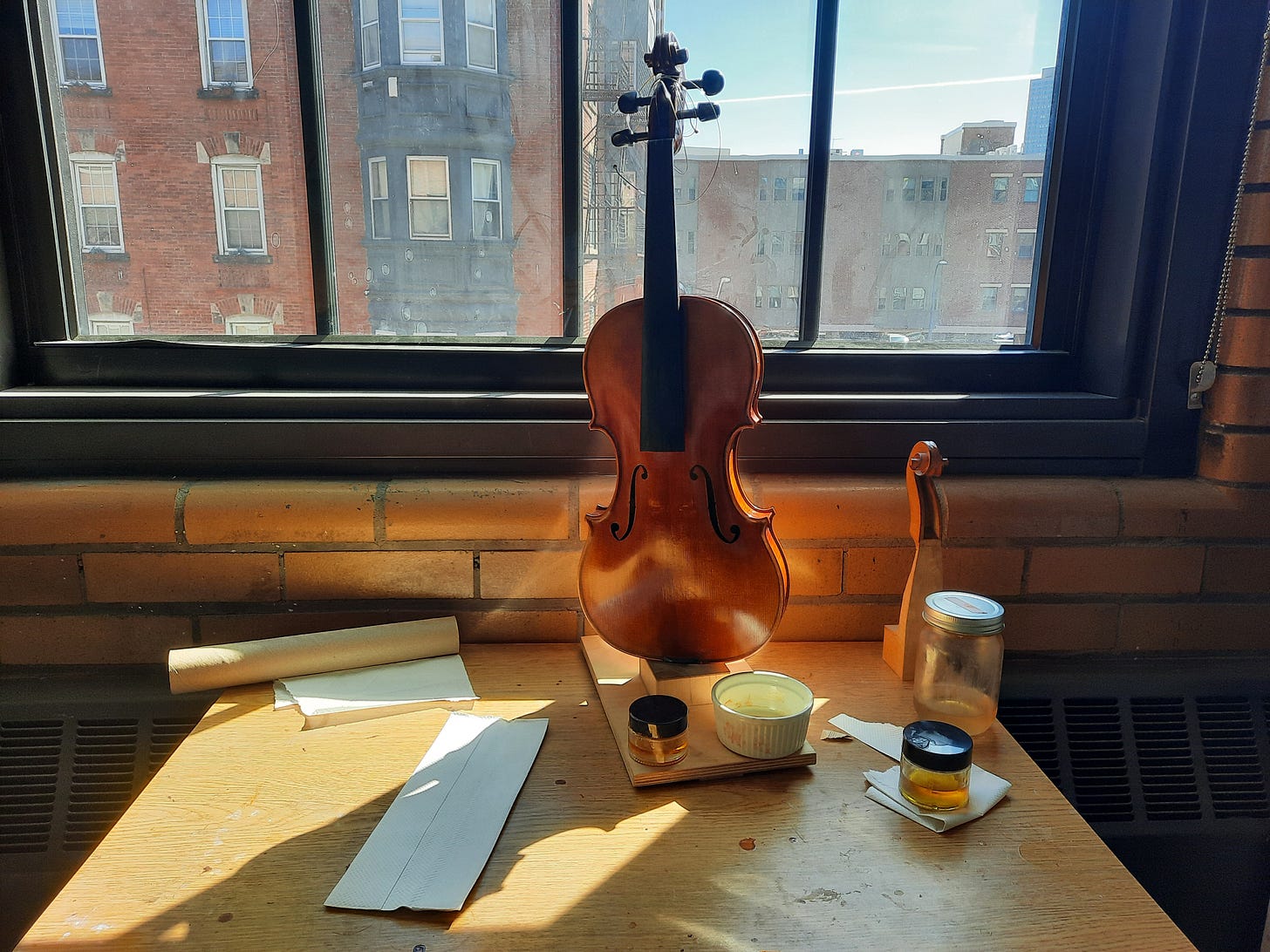
Roman Barnas’s story almost seems out of the 19th century. He grew up in a small mountain village near Zakopane, Poland, in the Carpathian Mountains on the border of what is now Slovakia.
“The woodworking was very advanced because the climate was a little harsh because of a higher elevation, so farming was a secondary thing. ” said Roman, the head of the violin making and repair department at North Bennet Street School for traditional crafts and trades. Indeed, as a youth, he attended a rare fine arts high school where violin making was a focus.
These days, musicians can buy machine-made violins, but Roman avoids machines. “I try to work by hand as much as I can. I stay away from taking shortcuts,” he said. “I could have a router making something for me, but I will miss the experience of being close and making a small change because it will just be better for the instrument at that moment. if I’m present all the time during the process of making, it becomes a better instrument.”
“The violin reflects the maker. It’s like handwriting,” he said. “When we write something by hand, we learn from the same teacher, but two people will have a little different handwriting.”
“The way we see it, the way we feel it, the way we make the smallest decisions,” he added, “it becomes this instrument that’s very personal.”
Much more in this Working Artist column in the Globe.
Ananth Udupa is a dancer, a visual artist, a scholar, a community planner, and more… and it all intertwines. He has been studying Bharatnatyam, an Indian dance style historically associated with female courtesans since he was six.
We met at the Dance Complex, where he was rehearsing for a performance this weekend during Danza Orgzánica’s We Create 2025: The Movements that Free(d) Us festival.
“My undergrad thesis was thinking about using the philosophies in Bharatnatyam, this emotion-based movement, as a tool to build resilient healing spaces,” said Ananth, who is 25. “I did transcription work drawing the movements. had dance workshops where dancers also participated in the drawing and noting of emotions. And then basically it became a schematic for a heat resilient green space in a mostly Hispanic community in South Phoenix.”
Upanayana Project, his performance at We Create 2025, is a work in progress that uses Bharatnatyam to explore the layers and baggage of an ancient Hindu ritual – a rite of passage aimed at boys, which Ananth underwent at age seven.
“There are parts of the ritual where it’s the last time, technically, your mother is allowed to feed you,” he said. “The messages are very clear. To eat in silence, to live a life of solitude, to dedicate yourself to the religion.”
The “Upanayana Project” blends “that history and my lived experience as a queer child being asked to renounce his femininity, his queerness,” Ananth said. Much more in this Working Artist story.



